Abstract
Victims of major electrical trauma frequently suffer extensive skeletal muscle and nerve damage, which is postulated to be principally mediated by electroporation and/or thermally driven cell membrane permeabilization. We have investigated the efficacy of two blood-compatible chemical surfactants for sealing electroporated muscle membranes. In studies using cultured skeletal muscle cells, poloxamer 188 (P188; an 8.4-kDa nonionic surfactant) blocks, and neutral dextran (10.1 kDa) substantially retards, carboxyfluorescein release from electropermeabilized cell membranes. To test whether P188 administered intravenously could have the same therapeutic effect in vivo, the rat biceps femoris muscle flap attached by its arteriovenous pedicle was electropermeabilized until its electrical resistivity dropped to 50% of the initial value. P188 (460 mg/kg) administered intravenously 20 min postshock restored the resistivity to 77% of the initial value. When P188 was administered intravenously 5 min before shock, a dose-dependent impedance recovery rate was observed. Neither neutral dextran (460 mg/kg) nor sterile saline was effective. Histopathologic studies indicated that postshock poloxamer administration reduced tissue inflammation and damage in comparison with dextran-treated or control tissues. Electrophysiologic evidence of membrane damage was not observed in flaps of animals pretreated with poloxamer. These results suggest that it may be possible to seal in vivo tissue membranes injured by electrical, thermal, or other membrane-damaging forces.
Full text
PDF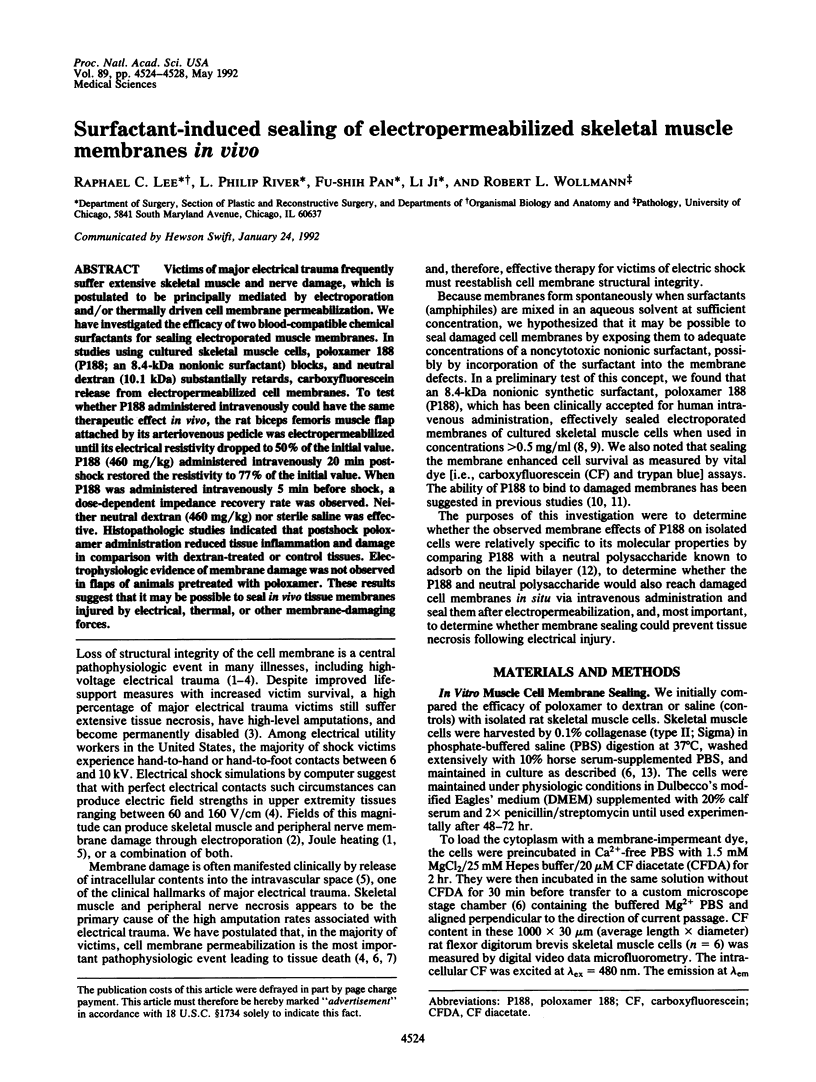
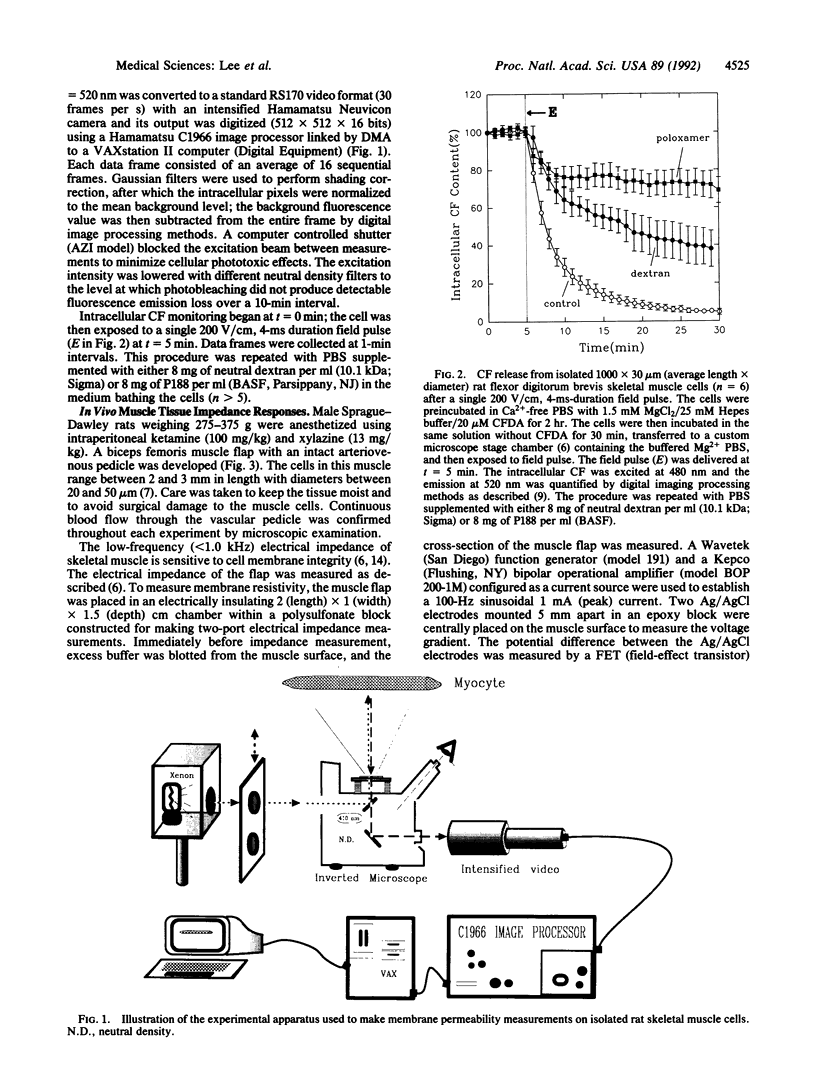
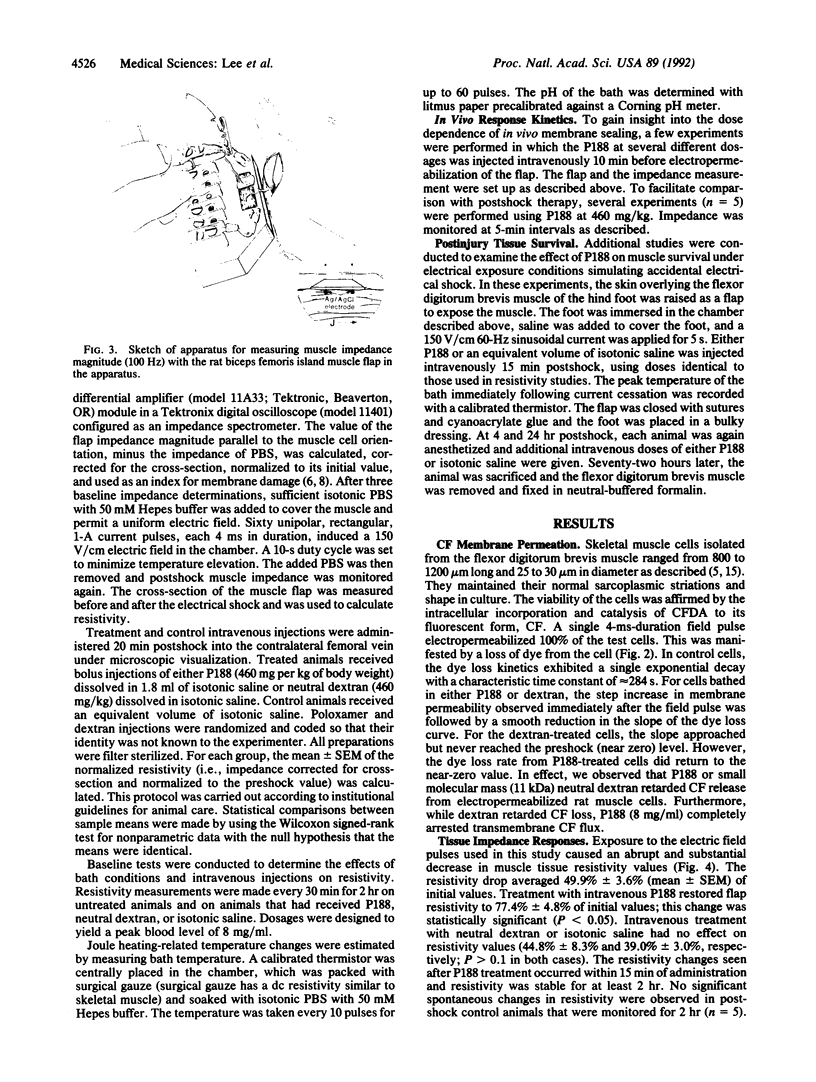
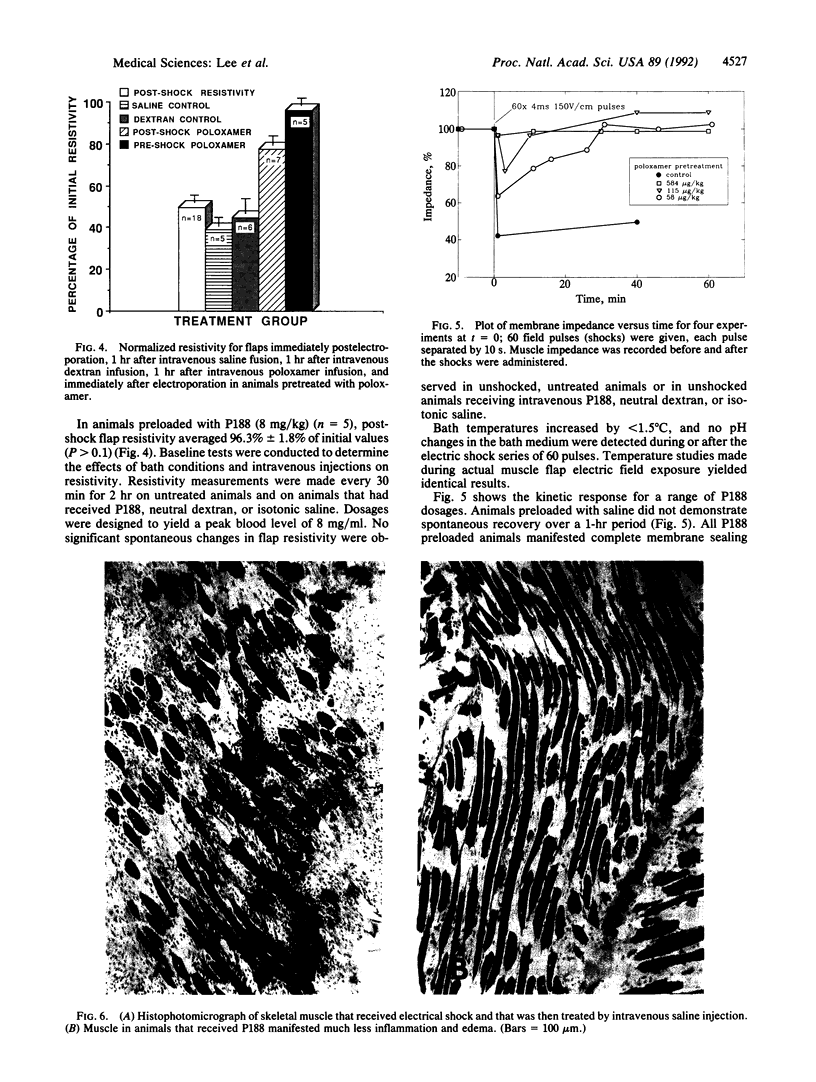
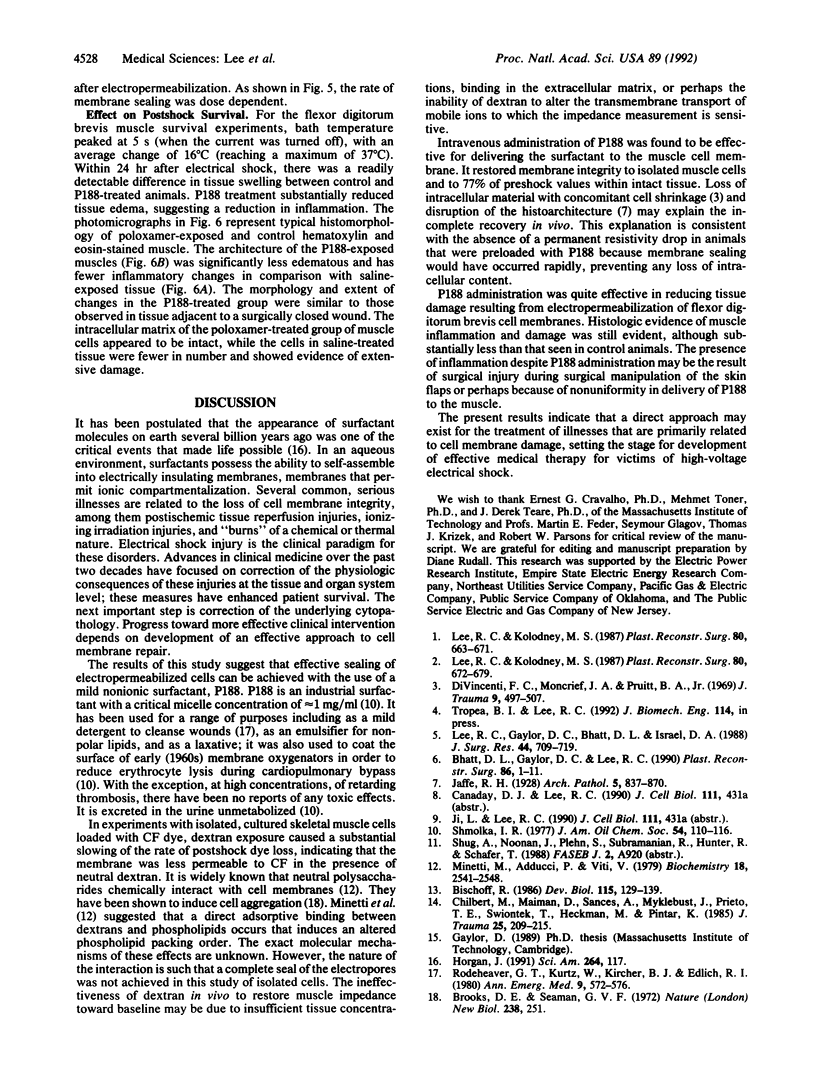
Images in this article
Selected References
These references are in PubMed. This may not be the complete list of references from this article.
- Bhatt D. L., Gaylor D. C., Lee R. C. Rhabdomyolysis due to pulsed electric fields. Plast Reconstr Surg. 1990 Jul;86(1):1–11. doi: 10.1097/00006534-199007000-00001. [DOI] [PubMed] [Google Scholar]
- Bischoff R. Proliferation of muscle satellite cells on intact myofibers in culture. Dev Biol. 1986 May;115(1):129–139. doi: 10.1016/0012-1606(86)90234-4. [DOI] [PubMed] [Google Scholar]
- Brooks D. E., Seaman G. V. Electroviscous effect in dextran-erythrocyte suspensions. Nat New Biol. 1972 Aug 23;238(86):251–253. doi: 10.1038/newbio238251a0. [DOI] [PubMed] [Google Scholar]
- Chilbert M., Maiman D., Sances A., Jr, Myklebust J., Prieto T. E., Swiontek T., Heckman M., Pintar K. Measure of tissue resistivity in experimental electrical burns. J Trauma. 1985 Mar;25(3):209–215. doi: 10.1097/00005373-198503000-00007. [DOI] [PubMed] [Google Scholar]
- DiVincenti F. C., Moncrief J. A., Pruitt B. A., Jr Electrical injuries: a review of 65 cases. J Trauma. 1969 Jun;9(6):497–507. [PubMed] [Google Scholar]
- Lee R. C., Gaylor D. C., Bhatt D., Israel D. A. Role of cell membrane rupture in the pathogenesis of electrical trauma. J Surg Res. 1988 Jun;44(6):709–719. doi: 10.1016/0022-4804(88)90105-9. [DOI] [PubMed] [Google Scholar]
- Lee R. C., Kolodney M. S. Electrical injury mechanisms: dynamics of the thermal response. Plast Reconstr Surg. 1987 Nov;80(5):663–671. [PubMed] [Google Scholar]
- Lee R. C., Kolodney M. S. Electrical injury mechanisms: electrical breakdown of cell membranes. Plast Reconstr Surg. 1987 Nov;80(5):672–679. doi: 10.1097/00006534-198711000-00002. [DOI] [PubMed] [Google Scholar]
- Minetti M., Aducci P., Viti V. Interaction of neutral polysaccharides with phosphatidylcholine multilamellar liposomes. Phase transitions studied by the binding of fluorescein-conjugated dextrans. Biochemistry. 1979 Jun 12;18(12):2541–2548. doi: 10.1021/bi00579a017. [DOI] [PubMed] [Google Scholar]
- Rodeheaver G. T., Kurtz L., Kircher B. J., Edlich R. F. Pluronic F-68: a promising new skin wound cleanser. Ann Emerg Med. 1980 Nov;9(11):572–576. doi: 10.1016/s0196-0644(80)80228-9. [DOI] [PubMed] [Google Scholar]






